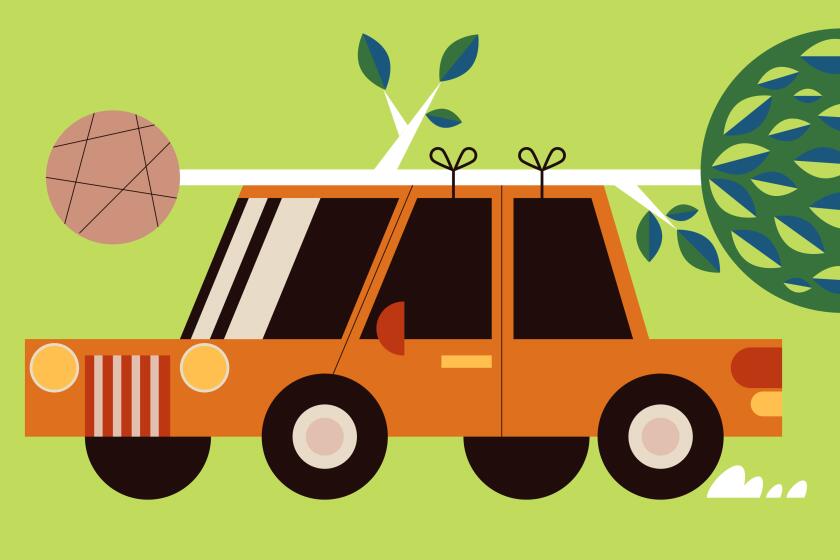The experimental backyard: Blue and yellow tree trunks, a fence of living apple trees

ENTER Ted Weiant’s backyard and first you may be impressed by the mini-garden of roses, the cactuses, the tropicals. But look a little harder and the landscape takes a turn for the quirky. A pretty little fence seems to be growing apples. The trunk of a pomegranate tree is an astonishing canary yellow. And the bonsai -- is that really bottlebrush?
Whereas some landscape designers use their personal gardens as showcases, others such as Weiant use them as laboratories, places where they can test ideas and try new approaches without upsetting a client. And as Weiant’s garden demonstrates, he has some delightfully subversive ideas on what plants are capable of doing and just how whimsical a garden can be.
Pockets of Weiant’s Hollywood backyard are devoted to coaxing the maximum sculptural potential out of ordinary trees (witness the bottlebrush).
But his most visually striking concept is painting tree trunks and branches in bold, bright colors. This idea came to him four years ago while he was pondering what to do with a bank of mature but listless camellia trees in one corner of his yard.
“They just didn’t make any statement, and they weren’t very healthy,” Weiant says. “So I thought, rather than pull them all out, I’d paint them blue. If they died, well, I’d at least have a blue sculpture in the yard. And if the paint protected them, then they’d survive.”
Just as citrus growers apply white latex to the trunks of their trees, Weiant applied outdoor latex paint to pink-flowering camellias. In time, the trees’ health improved, and the paint playfully emphasized their graceful shape.
Encouraged by this success, Weiant proceeded to paint a few more “insignificant” trees in his yard. The trunks and branches of fig trees were painted the same shade of green as their leaves; now the woody parts of the plant blend into the canopy above.
One of Weiant’s signature moves is the post-and-rail fence that he fashions out of espaliered apple trees. The idea arose as a practical solution to a problem he faced in his own backyard: the need to separate the garden and outdoor living areas.
“I didn’t want to put in a picket fence,” he says. “I wanted to keep it really natural.” He had seen the effect with pear trees while visiting Monet’s garden in Giverny, France.
Weiant’s 3-foot-tall apple fence is constructed out of Fuji and gala trees that were alternately planted every 6 feet. The trunks act as fence posts; branches were trained to grow sideways as rails, with a foot of space separating each one. For clients, Weiant has created these kinds of fences spanning as far as 60 feet.
“They’re absolutely gorgeous when they’re loaded with apples,” he says.
Then there are the petite bonsai trees, grown purely for his own enjoyment. The bottlebrush bonsai, a favorite of his because of its weeping form, was started from a branch he lopped off a fully grown tree.
“But the bonsai trees need constant maintenance,” he says with a sigh. “Constant.”
At least the routine work provides him with moments to reflect, to dream up new projects. And so the experiments continue.






